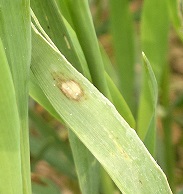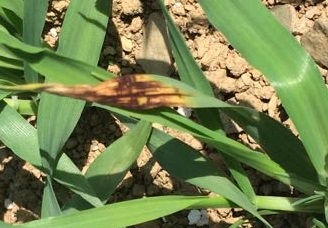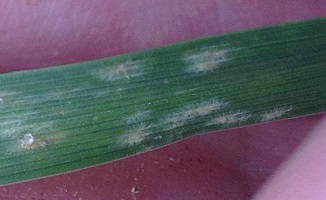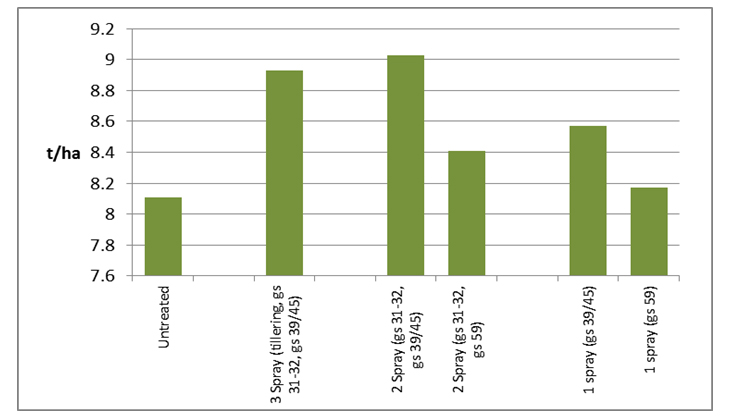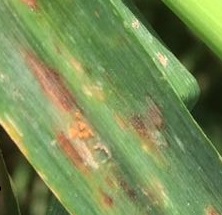Diseases
Diseases
Teagasc fungicide trials in winter wheat have given a yield response of approximately 3.0 t/ha with a good margin over fungicide costs and improved grain and straw quality.
A reasonable fungicide program will cost in the region of €190/ha. Crops Costs and Returns 2020 However this may be reduced by 20% for late sown crops, where disease pressure from Septoria and Eyespot is low and where disease resistant varieties are sown.
Integrated Pest Management (IPM) techniques should be used where possible. For more information on IPM visit: Integrated Pest Management
Septoria
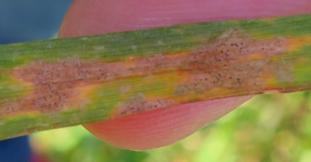
- Septoria is the most important disease of wheat in Ireland.
- A good fungicide programme has delivered 3.0-5.0 tonnes per ha in Teagasc trials
- However some strains of septoria are now resistant to some of the main fungicides.
Mildew
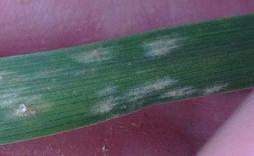
- Mildew is most evident in dense, susceptible varieties on older leaves e.g. Avatar.
- It appears as white pustules on the leaf
- Mildewicideare very active on wheat mildew.
- Include a mildewicide with first fungicide i.e. Leaf 4 (GS 31) or Leaf 3 (T1
Eyespot
- Early drilled crops in a plough-based system are highest risk
- Assess crops for visual symptoms at gs 31 and treat at the T1 timing
- Average yield response to eyespot fungicides 0.4 t/ha (HGCA – high-risk sites)
- Min-till crops have a lower risk due to antagonistic factors in the cereal stubble.
Yellow Rust
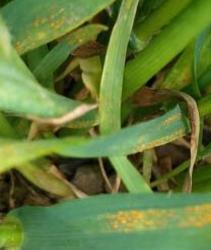
- Outbreaks of yellow rust occur occasionally in certain prone varieties
- It has the ability to spread very quickly in dry conditions
- Where detected use a strobulurin +/- to control.
- Yellow rust can also be controlled at the Leaf 3 timing with the triazole and SDHI fungicides.
Winter wheat disease control strategy
| Timing | Target Diseases | Product Options (rate/ha) |
|---|---|---|
| Leaf 4 (T0) GS30 |
Septoria (+/- Rust, Mildew) |
Multisite 1.5 L (+/- Strob or morpholine) |
| Leaf 3 (T1) (third last leaf emerged) Date Late April |
Septoria & Eyespot |
Multisite 1.5 L +Triazole + SDHI (80-100% rate) |
| +Mildew? | Mildewcide ½ – ¾ rate | |
| Flag leaf (T2) GS 39) Date Mid May |
Septoria? Rust? |
Multisite 1.5 L + SDHI + Triazole (80-100% rate) (See appendix 11 for other options)) |
| Mildew? | Include Mildewcide ½ – ¾ rate | |
| Flowering (T3) GS 51-60 Date Early-Mid June |
Septoria? Rust? Fusarium? |
Triazole 80-100% rateLow pressure sites: Metconazole, tebuconazole. +/- Strobilurin (50-80% rate) +/- Multisite |
| Mildew? + | Include Mildewcide ½ rate |
Winter wheat spray timings, rationale & research results
Leaf 4
- Yield response: NONE – helps better timing of Leaf 3.
- Timing: apply with PGR/onto leaf 4.
- Recommendations: 1.5 l/ha multisite (+/- strob for rust; morph for mildew)
- Notes: No benefit from adding triazoles but increases risk of resistance occurring
- Add a strob if rust is problematic or mildewicide if mildew is prevalent.
Leaf 3
- Yield response: (2012-2014 Teagasc experiments 0.5 t/ha)
- Timing: Apply onto final leaf 3 fully emerged (~ gs 32).
- Recommendations: 1.5 l/ha multisite + 80-100 % (SDHI + triazole mix)
- Notes: Assess for eyespot and mildew also at this timing.
- Yield response: (2012-2014 Teagasc experiments 1.7 t/ha)
- Timing: Apply onto flag leaf fully emerged (~ gs 39). See table above
- Recommendations: 1.5 l/ha multisite + 80 – 100 % (SDHI + triazole mix)
- This is consistently the best paying spray in winter wheat trials
The importance of identifying leaf 3 for septoria control in winter wheat.

